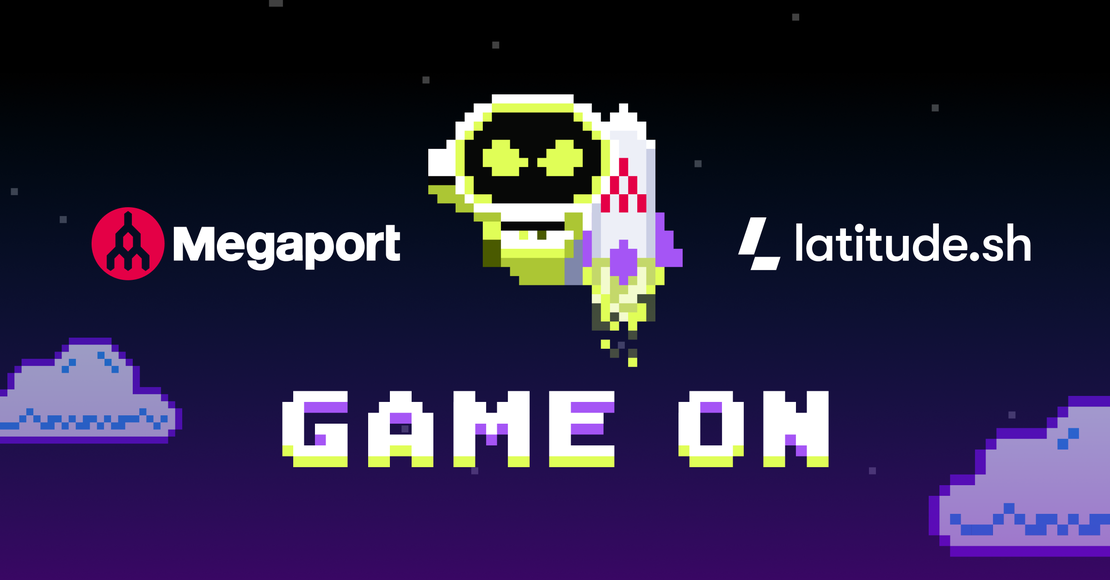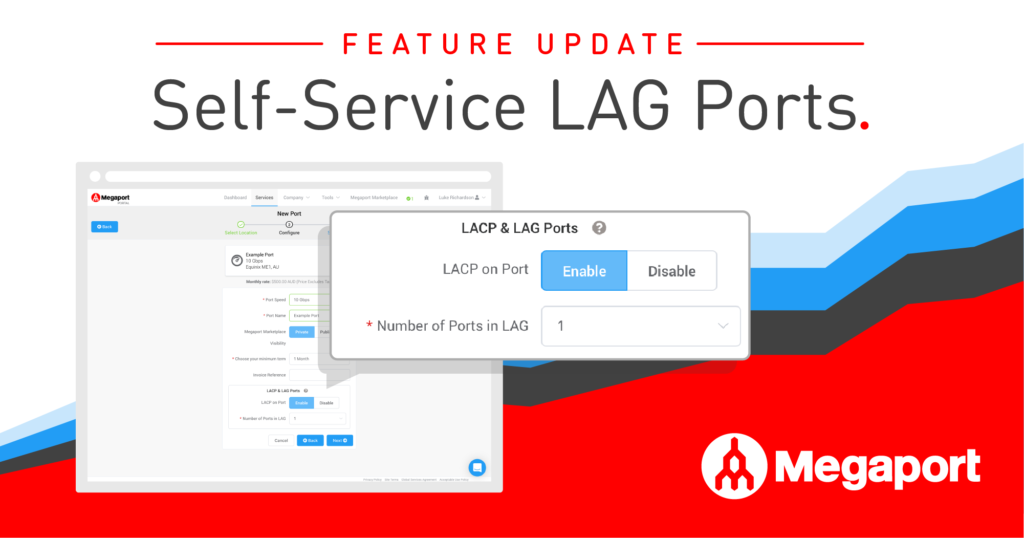
Six Key Differences Between Major Cloud Providers
- Cloud networking
- October 25, 2024
- RSS Feed
By Matt Bero, Solutions Architect
Demystify your private cloud options with our comparison of AWS, Azure, Google Cloud, and Oracle Cloud.
On a typical day at Megaport, our Solutions team helps a lot of customers with a lot of questions. And in my time here, I’ve noticed these questions often follow the same theme: What’s the best way to connect to their cloud service providers?
The reality is that there’s no simple answer to this question. For example, our Solutions team refers to a matrix of 13 private cloud provider connection features, most of them with different rules and values, to help customers make sense of their architecture. It’s no surprise, then, that the most common follow-up question we get is “why is it so complicated?”
The answer is simply because each cloud provider has built their private connections with their own set of rules based on what equipment they’ve used, their orchestration methods, and how the product and engineering team has mapped it all together. These different sets of rules become apparent when you compare compute platforms between different providers – for example, you’ll notice they have different names for their services, processes on how to create these services, and speed tiers.
These differences are actually what inspired the founding of Megaport back in 2013; we wanted to make the consumption of these connections simple, fast, and consolidated in one portal. We did this by uniting all these different rules behind a single front-end GUI (Graphical User Interface) to create a standard workflow. Combined with the extensive reach of our global backbone, we make private cloud connectivity easy and accessible by organizations that need these services.
Customers can take this to another level by writing to our API or Terraform provider to further abstract the complexity of consuming private cloud connections.
Instead of showing a complicated matrix, I want to clarify six main differences between the four major cloud providers: AWS, Microsoft Azure, Google Cloud Platform (GCP), and Oracle Cloud Infrastructure (OCI).
1. Where do I provision a private cloud connection?
Azure, GCP, OCI: In the cloud portal
Before provisioning your connection in the Megaport portal you need to create a service key in your cloud provider’s portal. Each provider is a bit different but it all starts with creating an Azure Express Route, GCP Partner Interconnect, or OCI FastConnect. Once created, you can then copy the resulting service key into the Megaport Portal.
This service key will contain important service details including speed, interconnection location, and which network provider you’re using. This information will be presented to you for confirmation before your order is finalized in the Megaport Portal.
Once accepted in the Megaport Portal, the API between Megaport and the cloud provider will complete the configuration. Once provisioned, you may have to complete a few additional steps in the provider portal to get started. Don’t worry – we have an extensive Docs Portal to coach you through all of our services.
AWS: In the Megaport Portal
When you set up an AWS connection in the Megaport Portal, you’ll be asked to provide your AWS account ID. This allows us to set similar attributes for your port before passing the details to AWS. When you have finished provisioning your connection in the Megaport Portal, your service will appear in your AWS Portal.
You’ll then be required to complete a couple more steps in the AWS portal to accept the circuit, add your service, and turn up Direct Connect. Our Docs Portal can guide you through this process, or there are plenty of videos online if you want a visual run-through. Alternatively, you can speak with your account team to get help with an initial turn-up.
2. How much bandwidth can I provision?
Each provider has set speeds you can select from – you can see exact speeds available from each cloud provider in the Megaport Portal.
AWS, Azure, GCP: Under 1 Gbps
Each of these providers supports connections ranging from 50 Mbps to 500 Mbps for lighter workloads.
AWS, Azure, GCP, OCI: 1-10 Gbps
Suitable for most workloads, all major providers support 1-10 Gbps of bandwidth.
AWS and GCP: Over 10 Gbps
AWS and GCP are currently the only major cloud providers that offer super-high-speed connections, at 20 Gbps or more.
3. Can I change my speed?
GCP, OCI: Yes, up and down
Scale your speed up and down on a single connection.
Azure: Only up
You can only scale up with Azure. If you want to scale down, you’ll need to provision a new service and deplete your old service.
AWS: No, you’ll need to provision a new service
Any speed change with AWS requires you to provision a new service. Don’t forget to deplete your old service!
4. How do I set up diversity?
AWS, GCP, OCI: Set up two separate connections
Setting up two separate connections requires 2 VLANs running on the Megaport network. The customer side of the network will terminate a single VLAN for each circuit used to send traffic to the cloud provider.
Azure: You need a single key with built-in diversity
Azure provides two connections on a single ExpressRoute by using Q-in-Q to negotiate the different Layer 2 addresses. We have adapted our network and GUI to support a variety of different ways for customers to leverage Q-in-Q.
5. Can I perform MACsec on a connection to a cloud provider?
Azure, AWS, OCI, GCP: You’ll need a dedicated connection to the provider
At least they all agree on something! The only way to support MACsec is to provision a dedicated connection to your provider of choice.
6. Where do I connect to the cloud provider?
AWS, Azure, GCP: Local cloud on-ramp or close to your compute resources
It’s your choice whether you want to connect to the local cloud on-ramp closest to your Megaport access service (Port, MCR, MVE), or closest to your compute. You can do this with either your Megaport underlay or the cloud provider’s underlay.
In many cases, destination devices for your cloud provider are globally accessible, meaning you can attach your compute to the provider router both in-region and across regions. Ultimately, your choice should come down to which backbone you want to use and what will best fit with your resilience strategy.
OCI, Azure: Connect to the closest cloud on-ramp to your cloud provider’s service location
Certain types of connections, like an Azure Local ExpressRoute, require you to connect to the cloud on-ramp in the region of your provider’s services. Similar scenarios apply with Government cloud (GOV Cloud) connections, which are specifically built for government resources. In these cases, your service and cloud on-ramp both need to be in the same location.
With OCI, the region your compute is located in should also match which Megaport on-ramp you need to use.
Conclusion
There are many more differences between these leading cloud providers, but understanding these six key differences can guide you to make the best private connectivity decisions for your business.
Whatever decisions you make, our portal allows you to consume and adapt these services as your business grows and your needs change. For example, Microsoft Azure is currently rolling out a new Metro ExpressRoute which is currently only available in select markets (Singapore, Amsterdam, and Zurich); we have a team of people working to ensure these services are available with Megaport as they continue to expand.
As your network grows along with your dependency on cloud and data center services, Megaport becomes your connective glue. We’re constantly updating our platform and GUI to provide an easy-to-use portal that connects users, data centers, and clouds together.
Ready to simplify connectivity at enterprise scale? Get a free demo of our self-service portal.





